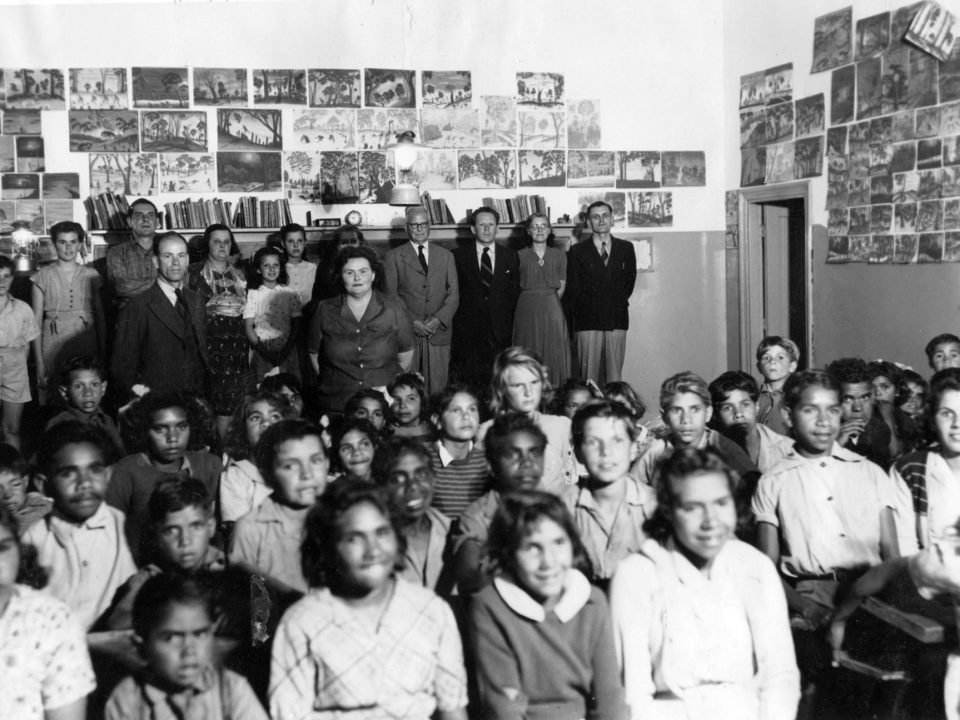On the 2nd February 1950, Mrs Rutter told the boys of Carrolup that she would do all in her power to make their work known throughout the world. Seventy years later, John Stanton and I are trying to help the children of Carrolup reach out again, through our forthcoming book Connection: Aboriginal Child Artists Captivate Europe, this website and our YouTube channel. Here is a section from Appendix 2 of the book, The Healing – Reflections:
‘As I have stated earlier, Noongar Elders have emphasised to us how important the Carrolup story is to their people and to their culture. They, and other Noongar people, know that the story can facilitate healing in Aboriginal communities.
‘It is our history and yes, a very sad one at that. But a very important one that must not be forgotten and must be shared for there to be an understanding from all people of what happened and what has brought about the trauma, disconnectedness, broken hearts/lives etc… it is so important for our family, our community and for those who need to hear our stories to understand why we are here, where we are as a people now, and how we can walk together to bring about much needed healing in our communities, hearts & minds.’ Wazza Jones, The Carrolup Story, 14th December 2018. Wazza’s father Warrick Jones was at Carrolup, 1946-1950
Connecting Aboriginal people to their culture, land, spirituality, family, community and history is key to healing. John and I believe strongly that the story of Carrolup—which has never been told in detail—will help create cultural pride amongst Aboriginal people, which in turn will facilitate cultural connectedness. The story shows how Aboriginal children overcame considerable adversity, revealed their considerable talents, and captivated the public in various countries around the world.
In the Elders Report Into Preventing Indigenous Self-harm and Youth Suicide, published in 2014, Aboriginal Elders from around Australia stressed that the government’s top-down approach in ‘helping’ Aboriginal people was not working. They argued for: 1) Indigenous people to be connected to their culture, and 2) a community-led approach to healing. They said that access to traditional knowledge and culture strengthens a positive sense of identity, and provides young people a cultural foundation that ‘helps protect them from feelings of hopelessness, isolation and being lost between two worlds.’
These arguments are strongly supported by seminal research by Michael Chandler and Christopher Lalonde with over 200 Indigenous communities in British Columbia, Canada. They observed that whilst some Indigenous communities had suicide rates nearly 800 times the national average, others had no suicides at all.
They also found a strong correlation between ‘cultural continuity’ factors and the incidence of suicide. Indigenous communities that have control over local institutions and are grounded in a collective sense of history and culture have the low rates of suicide or no suicides at all.
By telling the Carrolup story, John Stanton and I aim to help people understand the impact of colonisation in the past and the legacy it has left for Aboriginal people today. We provide insights into what can help Aboriginal (and non-Aboriginal) people overcome trauma and its consequences.
Whilst healing comes from the individual, the process of healing is influenced by a person’s environment, e.g. their family, community, government policies. With this book and our website, we aim to educate and inform non-Aboriginal people, to help wider society create safe and empathic environments in which healing can take place. Prejudice and racism act as major barriers to healing. By enhancing public awareness of the issues that have been faced by Aboriginal people, and celebrating their resilience and successes, we hope to reduce prejudice and racism in today’s world.
The story of Carrolup speaks to today, not just in relation to Aboriginal and non-Aboriginal people, but also to the oppressed and their oppressors in various parts of the world. At its heart, our story is about the innate emotional needs of human beings, e.g. to feel a sense of belonging. What happens if these innate needs are not satisfied? And what can happen if satisfaction of these needs is restored?
We not only are committed to ensuring that our overall Carrolup project influences a diverse population of people today, but also that it becomes a legacy for future generations. Trauma has rippled across generations—healing can do the same.’ Connection: Aboriginal Child Artists Captivate Europe. David Clark, with John Stanton. Copyright © 2020 by David Clark


